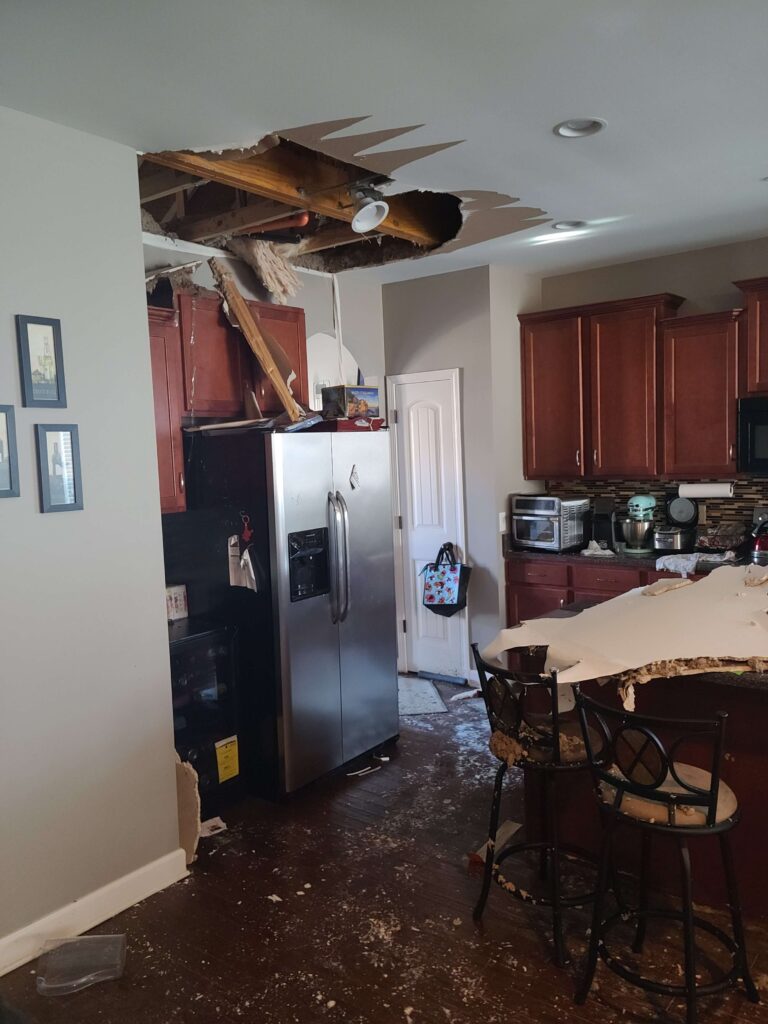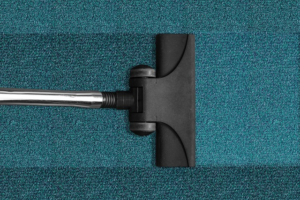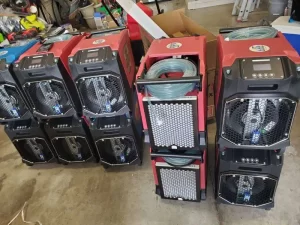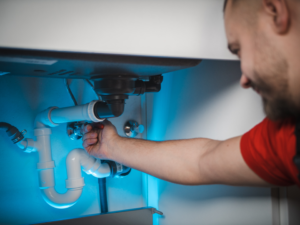It’s every Tennessee homeowner’s worst nightmare: your home is full of water, and your gorgeous wood furniture is damaged.
The first thing you need to do when your home floods is call your insurance and a water restoration company for help. A water restoration company will lessen the impact of water damage, document the damage for your insurance, provide estimates for repairs, and fully restore your home, even after major water damage.
The sooner you start the restoration process, the less risk your home will develop mold, especially dangerous black mold. Black mold is one of the biggest risks from water-damaged carpet and flooring, as it can directly impact your health.
After you’ve scheduled water damage restoration services, you can take steps to DIY fix your water-damaged wood furniture while you wait.
Can You Repair Water Damaged Wood Furniture?
After water damage, wooden furniture unprotected by a marine-based polyurethane is vulnerable to mold and rot, as well as surface damage like water stains, cracks, and bubbles.
Watermarks come in two levels of severity: light marks like white spots mean the damage is surface level, while dark watermarks mean moisture has seeped into and below your finish.
The type of furniture material plays a part as well; wood veneer might lift from the wood glue because of the increased moisture content, while wooden furniture made from natural wood might swell up, chip, and break apart.
No matter the type of furniture, it is always worth trying to repair your belongings after excess moisture and water damage. Follow the seven steps below to bring your beloved furniture back to life.

How To: 7 Steps To Repair Water Damaged Furniture
1. Air-Dry Your Furniture
Drying your furniture is the first step— it must be fully dry before you can repair it from water damage. If wood holds too much water, the repair process can worsen matters.
If the air outside isn’t too humid, start the drying process by taking your furniture outside. Direct sunlight can fade the color on your wooden furniture and carpet, so you may need to place the drying furniture under a cover, such as a carport, and let the warm air do the rest.
Let your furniture dry indoors if the sun isn’t out or the air is too humid. You can set up some box fans to accelerate the process.
2. Use A Belt Sander and Furniture Oil on Water-Damaged Wood Furniture
When repairing water damaged wood furniture, replacing the finish is better than repairing it. Use a belt sander to sand it down, then follow up with a finishing sander to create an ultra-smooth surface, working out any inconsistencies.
Next, apply furniture oil. You want to find an oil that will stain, seal, and protect so your wood furniture will be safe in the future. Coat the surface with oil before rubbing it into the wood, then wipe off any leftover oil residue.
3. Use an Iron on Swollen Furniture
You may notice that some pieces of wooden furniture have swelled from water damage. This is caused by water damage that has seeped below the surface, meaning your furniture wasn’t coated in a water-proof finish like marine-based polyurethane.
If your wood furniture is swollen but not overtly damaged, you can use an iron to repair it.
Place a damp cloth, never a dry cloth, over the wood and set your iron to low. Hold the iron on the rag for a few seconds, but don’t keep it still for long— instead, move it in a gentle swirling pattern.
You can repeat this if you don’t see immediate improvement, or you can try the other solutions in this article.
4. Replace or Support Your Fixings
Nuts, bolts, and screws can come loose from furniture with too much water. You can add more fixings for extra support or remove the old ones, repair the holes, and replace the fixings altogether. Prioritize frame fixings for stability.
You may also need to restore loose joints with wood glue. Carefully remove old glue by sanding between joints, then brush away dust and residue. Spread the glue inside to restore the joint, and then use clamps or braces to hold the furniture piece together for around 12 hours.
5. Remove Watermarks
To remove watermarks from your furniture after drying, choose from several easy mixtures you can make with supplies from your home.
You can try baking soda with water, toothpaste, olive oil and vinegar, or salty water (make sure the salt completely dissolves first). Rub your mixture of choice over the spot in a circular motion to see if the stain disappears. If nothing works, you may need to use the above sand and oil method.
Dark stains and watermarks can be a sign of mold growth. You will need to strip your upper finish and clean the spots with a peroxide cleaning solution. Once dry, apply a new coat of finish.
6. Scratch Removal
First, clean the area— you don’t want any oil, dirt, or other residue to get trapped. You can use a cloth dipped in a mix of dishwashing liquid and water. Next, purchase wood filler that has the same color as your wood’s finish.
If the scratch is deep, use a finishing sander to smooth the surface before applying filler. The market has different filler types, but the markers are the easiest to use.
7. Repairing Furniture Veneer
Wooden furniture veneer isn’t natural wood – it is actually layers of artificial wood glued together in layers with a finished surface over the top. It is still vulnerable to water damage, especially along the joints and surface.
If you notice dull white spots, try applying furniture oil first. If that doesn’t work, use a rag dampened with denatured alcohol. Be sparing, as too much alcohol can cause further discoloration. You can also use a mix of rottenstone and oil.
Clean the white spots very carefully and then wipe them with a rag. If the stain is gone, you can spot wax or wax down the entire surface before polishing.
If the veneer glue has weakened or come undone, you will need to peel off the top layer, apply new veneer glue slowly inside, and realign the top layer. Use clamps to hold the furniture together while the glue dries.
More Ways Professional Water Restoration Services Can Help
Professional help from a water restoration service not only bodes well for your swollen wood furniture, they can also provide additional damage control like pumping out water, drying and dehumidifying your home, decontaminating surfaces from mold and bacteria growth, and fully restoring damaged floors and walls.
If your home has recently flooded or you’ve found evidence of mold growing, don’t wait— contact Flood Kings today!








